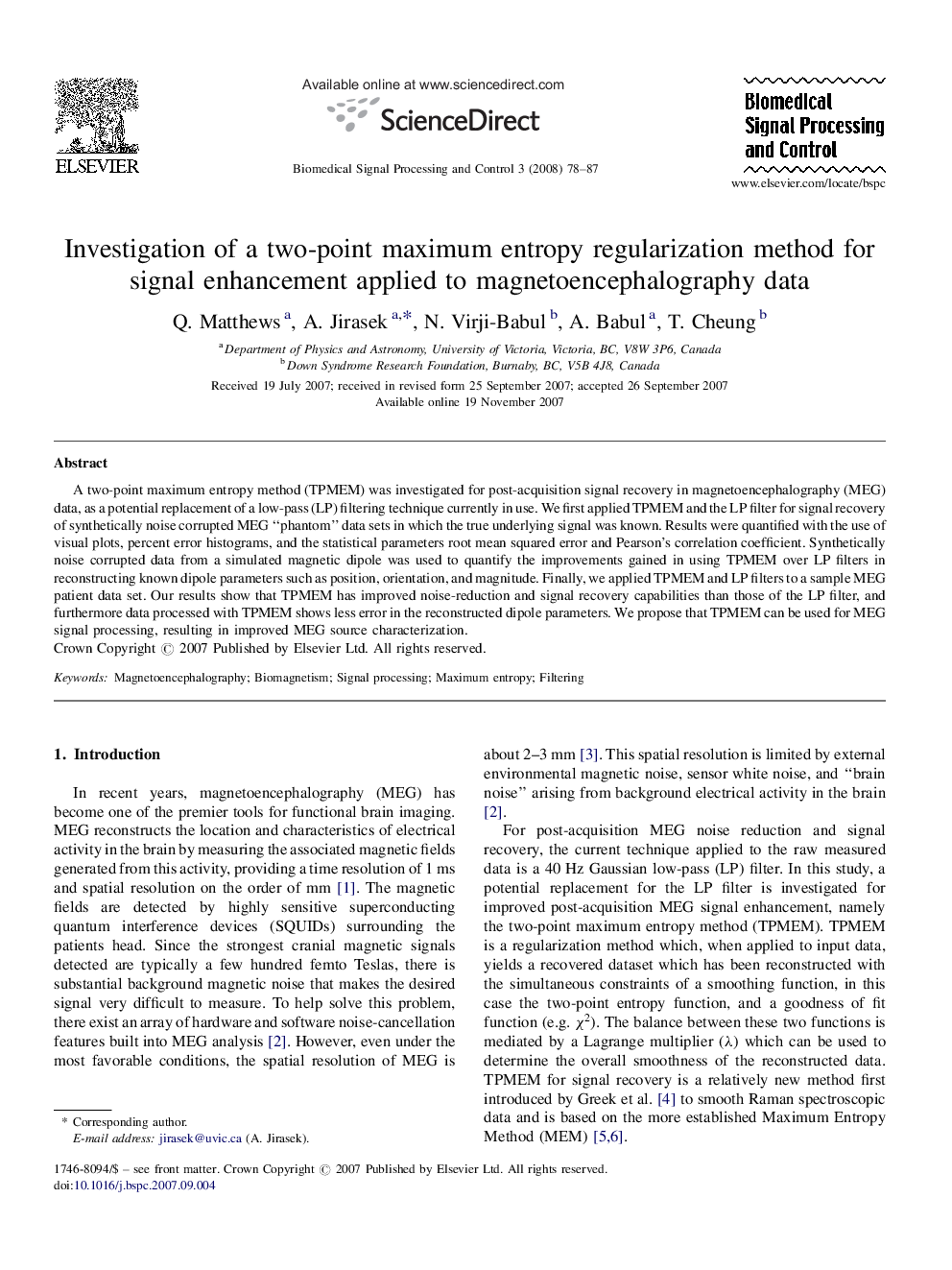| Article ID | Journal | Published Year | Pages | File Type |
|---|---|---|---|---|
| 558309 | Biomedical Signal Processing and Control | 2008 | 10 Pages |
A two-point maximum entropy method (TPMEM) was investigated for post-acquisition signal recovery in magnetoencephalography (MEG) data, as a potential replacement of a low-pass (LP) filtering technique currently in use. We first applied TPMEM and the LP filter for signal recovery of synthetically noise corrupted MEG “phantom” data sets in which the true underlying signal was known. Results were quantified with the use of visual plots, percent error histograms, and the statistical parameters root mean squared error and Pearson’s correlation coefficient. Synthetically noise corrupted data from a simulated magnetic dipole was used to quantify the improvements gained in using TPMEM over LP filters in reconstructing known dipole parameters such as position, orientation, and magnitude. Finally, we applied TPMEM and LP filters to a sample MEG patient data set. Our results show that TPMEM has improved noise-reduction and signal recovery capabilities than those of the LP filter, and furthermore data processed with TPMEM shows less error in the reconstructed dipole parameters. We propose that TPMEM can be used for MEG signal processing, resulting in improved MEG source characterization.
